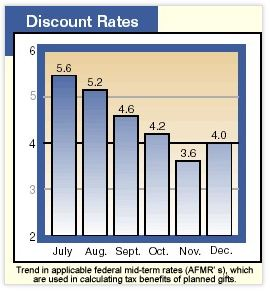Many planned and major gifts are funded with highly appreciated assets. In the typical arrangement, the donor’s income tax deduction is based on the full fair market value of the contributed asset (including unrealized appreciation), and the donor bypasses any capital gains tax liability at the time the property is donated.
The combination of income and capital gains tax savings helps explain the popularity of these gifts. But despite how common gifts of appreciated assets have become, the exact rules surrounding them can be bewildering. In an attempt to clear up the confusion, below we have addressed some of the most frequently asked questions about how the capital gains tax affects gift planning.
- What types of property can be donated on a favorable basis? Generally, gifts of both real and intangible personal property that are capital assets and have been held longer than a year qualify. Popular examples include real estate, stocks, bonds, and other securities.
- What about other assets? While they certainly may be contributed, special rules apply to so-called “ordinary income” assets and tangible personal property. If the sale of the asset would produce a short-term gain or ordinary income for income tax purposes, the contribution will ordinarily be the lesser of the fair market value or the donor’s cost. In the case of tangible personal property, more favorable tax treatment is extended to gifts that qualify under the “related-use rule” (see “Planning Matters” in the November 2000 issue of Give & Take).
- What can the donor deduct? Unlike gifts of cash, which may be deducted up to approximately 50% of the donor’s adjusted gross income (AGI) in the year of the gift, gifts of qualifying long-term capital gains properties are subject to a lower annual deduction limit of 30% of AGI. In both instances any unused deduction may be carried over for use in up to five future years.
- What is the “extra” tax savings by making a gift of appreciated property? The “extra” savings is the amount of capital gains tax that would have been paid if the asset had been sold. This amount depends upon the applicable capital gains tax rate and the size of the gain.
- What is the capital gains tax rate? The rate depends upon the taxpayer’s income level, the type of asset, the length of time the asset was held, and other factors. The 1997 Tax Act created a number of different capital gains rates. The most common maximum capital gain rate of 20% usually applies to gifts of appreciated securities or real estate. However, if real estate has been subject to accelerated rather than regular depreciation, a 25% rate is applied to the portion of the gain that represents the excess of accelerated over regular depreciation. With certain types of collectible tangible personal property such as rare art, stamps, coins, antiques, etc., a maximum capital gains rate of 28% will apply. Special rules can also apply to certain assets held longer than five years.
- What impact does capital gains tax planning have on planned gifts that provide a donor with payments? Technically, the amounts donors receive from charitable remainder trusts and gift annuities must be tracked according to the nature of the income that comprises the payments. In the case of CRTs, the taxpayer may report a portion of income as capital gain as it is distributed, under the IRS’s “four-tier” payout system (see IRC Section 664(b)). As a result, the trustee of a charitable remainder trust must keep up with the amount and type of gain that was avoided at the time the trust was funded (or generated from subsequent investments) and properly report distributions to the recipient according to the extent to which they include capital gain. With gift annuities, any capital gain present in the property used to fund the gift annuity will generally be recognized over the donor/recipient’s life expectancy to the extent it is attributed to the payment stream. If the donor is not the payment recipient, then all of the gain attributable to the payment stream must be recognized by the donor at the time the gift is funded.

- What if there is very little appreciation in the asset that a donor would like to contribute? In such an instance, it may be advantageous to make the “50% election” for tax-deduction purposes. The donor may elect to reduce the deduction to the amount of the donor’s cost basis and take the deduction against the 50% of AGI limit instead of the 30% limit that would otherwise apply to gifts of appreciated property. This strategy can provide additional savings where the basis is high and the additional tax savings from the larger deduction is more valuable than the smaller deduction that would otherwise be taken over a longer period of time.
Even simple gifts of appreciated property can become quite involved depending upon the circumstances. In situations out of the ordinary, gift planners should work closely with the donor and/or the donor’s advisor to help ensure that tax savings are accurately described and optimized. It is also vitally important that the benefits of gifts of appreciated property be accurately described in materials designed to inform donors and their advisors.

